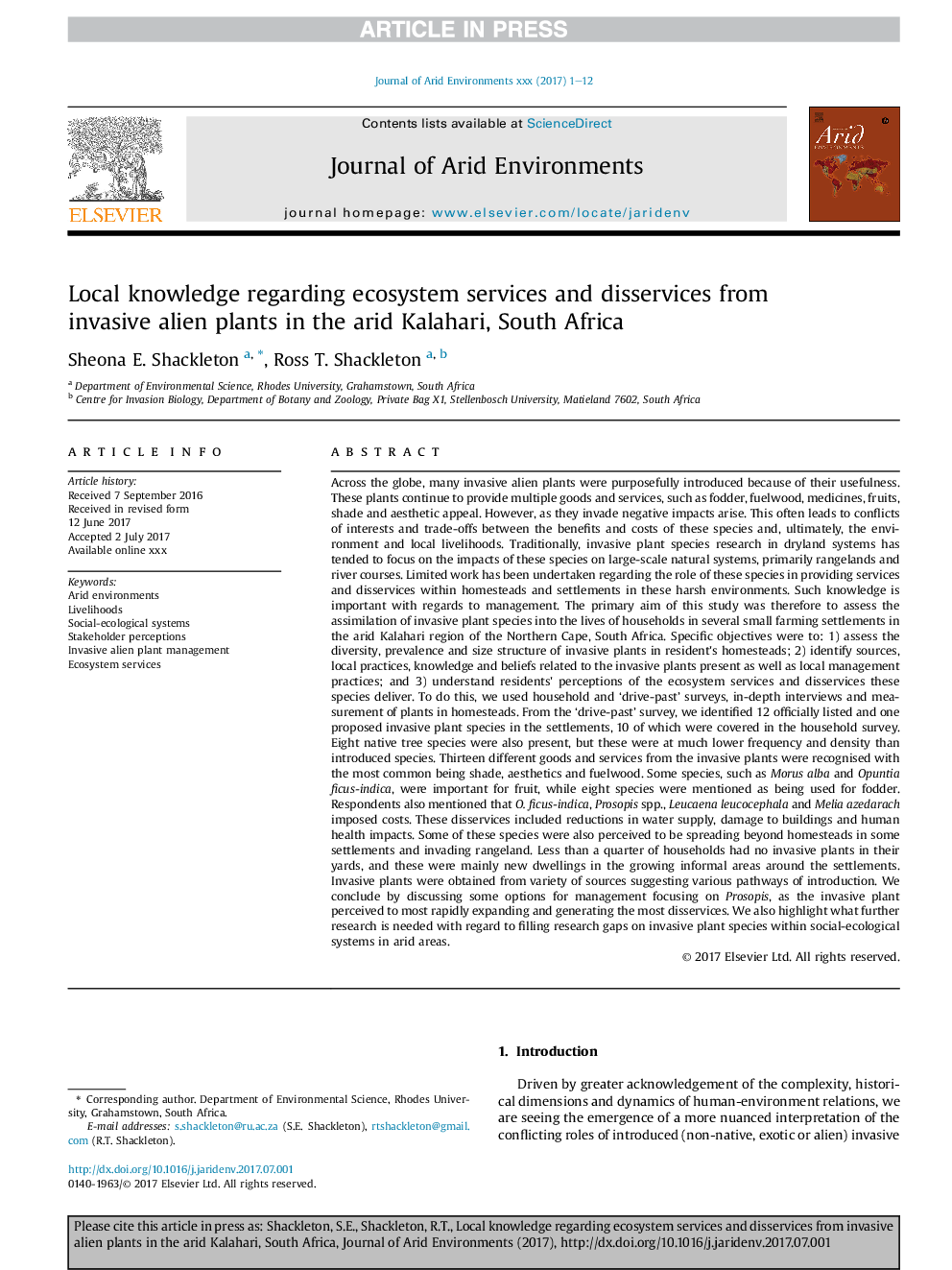| Article ID | Journal | Published Year | Pages | File Type |
|---|---|---|---|---|
| 11013129 | Journal of Arid Environments | 2018 | 12 Pages |
Abstract
Across the globe, many invasive alien plants were purposefully introduced because of their usefulness. These plants continue to provide multiple goods and services, such as fodder, fuelwood, medicines, fruits, shade and aesthetic appeal. However, as they invade negative impacts arise. This often leads to conflicts of interests and trade-offs between the benefits and costs of these species and, ultimately, the environment and local livelihoods. Traditionally, invasive plant species research in dryland systems has tended to focus on the impacts of these species on large-scale natural systems, primarily rangelands and river courses. Limited work has been undertaken regarding the role of these species in providing services and disservices within homesteads and settlements in these harsh environments. Such knowledge is important with regards to management. The primary aim of this study was therefore to assess the assimilation of invasive plant species into the lives of households in several small farming settlements in the arid Kalahari region of the Northern Cape, South Africa. Specific objectives were to: 1) assess the diversity, prevalence and size structure of invasive plants in resident's homesteads; 2) identify sources, local practices, knowledge and beliefs related to the invasive plants present as well as local management practices; and 3) understand residents' perceptions of the ecosystem services and disservices these species deliver. To do this, we used household and 'drive-past' surveys, in-depth interviews and measurement of plants in homesteads. From the 'drive-past' survey, we identified 12 officially listed and one proposed invasive plant species in the settlements, 10 of which were covered in the household survey. Eight native tree species were also present, but these were at much lower frequency and density than introduced species. Thirteen different goods and services from the invasive plants were recognised with the most common being shade, aesthetics and fuelwood. Some species, such as Morus alba and Opuntia ficus-indica, were important for fruit, while eight species were mentioned as being used for fodder. Respondents also mentioned that O. ficus-indica, Prosopis spp., Leucaena leucocephala and Melia azedarach imposed costs. These disservices included reductions in water supply, damage to buildings and human health impacts. Some of these species were also perceived to be spreading beyond homesteads in some settlements and invading rangeland. Less than a quarter of households had no invasive plants in their yards, and these were mainly new dwellings in the growing informal areas around the settlements. Invasive plants were obtained from variety of sources suggesting various pathways of introduction. We conclude by discussing some options for management focusing on Prosopis, as the invasive plant perceived to most rapidly expanding and generating the most disservices. We also highlight what further research is needed with regard to filling research gaps on invasive plant species within social-ecological systems in arid areas.
Keywords
Related Topics
Physical Sciences and Engineering
Earth and Planetary Sciences
Earth-Surface Processes
Authors
Sheona E. Shackleton, Ross T. Shackleton,
